This week we had to complete a story analysis for a well known story such as a Disney tale, CS Lewis, Star Wars, Lord of the Rings, etc. I have decided to keep with the first idea and have spent long and painful hours thinking way too hard about an kids movie. And so, with that said I present my Disney analysis for “The Lion King”. CAUTION! Contains movie spoilers!
Author: Irene Mecchi, Jonathan Roberts, and Linda Woolverton.
Genre: Sci-fi/ fantasy
Audience: 12 and under
Characters
List the characters in the story and give a thorough description of each one. Consider physical, emotional, relational, social status, and occupational characteristics.
Mufasa is the regal and majestic lion king of the Pride Lands who rules with a kind, generous heart. Concerned with teaching his son Simba to be a wise, responsible adult and king, Mufasa can seem a bit stern at times, but it’s only because he loves Simba and wants to keep him safe.
As a king and leader, Mufasa holds a deep understanding of the forces that make the Pride Lands balanced and healthy. His duties as King of Pride Rock include managing the hunting of his own pride and other creatures, and resolving disputes over feeding and watering grounds, to ensure the land’s resources are not exhausted; he also must patrol the boundaries to drive out interlopers and prevent such crimes as killing for sport. Mufasa’s trust and kindness for everyone, even his brother Scar, causes him to put his guard down unfortunately making him vulnerable to the full attack of Scar’s bitterness and jealousy which results in Mufasa’s murder.
Sarabi is Mufasa’s wife and Simba’s mother. She is kind, gentle, loving and wise. As head of the lionesses of Pride Rock, Queen Sarabi leads beside King Mufasa. She’s a responsible mother, watching out for her son and making sure he doesn’t get into any trouble that he can’t get out of, as well as making sure he keeps clean. Courageous Sarabi holds her composure and dignity even through Scar’s destructive rule, and is proud when her son comes back to battle the evil ruler and claim his rightful place as King.
Sarabi is crushed at the death of her husband and missing son and under the leadership of Scar and the occupying Hyenas; her duty is solely to the pride and whatever remains of the fertile land as she retains Mufasa’s knowledge of the balance of the Circle of Life and tries in vain to make Scar understand the damage he’s causing to the Pride Lands; but her advice is unwanted and unheeded by the vindictive usurper. Only the unexpected, but timely, return of Simba stops what surely would have been Sarabi’s murder by Scar trying to pin his failure on her.
 Simba:
Simba: ![]() [ Sim-baa ] (Main Character)
[ Sim-baa ] (Main Character)
During the first part of the movie, Simba is a rowdy, independent little lion cub who likes to roam and play with his best friend Nala. He is the only son of King Mufasa, ruler of Pride Rock, and Queen Sarabi and the nephew of the King’s evil brother Scar. All Simba wants is to grow up to be exactly like his brave father but when Mufasa dies and the death is thought to be his fault, Simba runs away, no longer able to face kingship which leaves the young cub unsure of who he is.
After the disastrous wildebeest stampede, engineered by Scar, Simba is exiled to the jungle far from Pride Rock where he is befriended by Timon and Pumbaa, an unlikely pair of outcasts living the easy life in the land of crystal waterfalls and tasty bugs. He’d have been perfectly happy to live there forever, if not for later meeting Nala only to find out that he alone is needed to save the pride lands. The wise baboon Rafiki then shows Simba his reflection in a pool reminding the young lion that his true identity is found in his father and also, that his father’s courage and wisdom are a part of him because he lives inside his heart. Simba then chooses to stop Scar’s destruction and heads back home to face his destiny.
Rafiki is the wise old baboon who acts much like a tribal medicine man or an ancient shaman and his moods are either very passive and serious or extremely goofy and cheerful. Rafiki travels his own road, sings his own songs and knows what he knows. After anointing newborn Simba, Rafiki wanders off on his own way until he goes to remind the grown Simba of who he is meant to be and fights alongside him in the last battle against Scar.
Old Rafiki’s role is Mufasa’s teacher and guidance councilor who lives in a baobab tree within sight of Pride Rock. He is a special guest at the presentation ceremony of the newborn Simba whom he blesses and shows to the whole assembled population of the Pride Lands; after this, he monitors the young prince’s growth and progress in the paintings he makes on the side of his tree.
Zazu’s character is a small hornbill with a strong sense of personal dignity as Mufasa’s trusted advisor. Although Zazu’s feathers can be easily ruffled, he is wholly dedicated to Mufasa and stays with the pride through the good times and bad.
Zazu carries and delivers messages for the king, keeping him informed of happenings within his lands. Under Mufasa’s kingship, Zazu’s position is one that fills him with pride and courtly manners. It’s his job to report to the king on any potential disputes or crises over hunting, feeding, or watering rights, or any trespassing done by outsiders who must be driven out of the Pride Lands. He takes this job quite seriously which others find amusing at times and make him the punch line of occasional jokes. Yet Zazu takes on all responsibilities without complaint, even when asked to oversee the adventures of the two rambunctious cubs.
Nala is a young female lion and Simba’s best friend. She is every bit as daring as Simba, and is ready to go wherever he goes or do whatever he does. As best buddies, they are disgusted when Zazu tells them they are to be married one day and laugh at the idea, but as time changes things and they meet again, they realize their friendship has deepened into love.
Nala’s mother is Sarafina, one of the pride’s lionesses and a friend of Sarabi. The Pride’s traditions dictate that Nala and Simba will one day be Queen and King together, but when Simba is lost after Mufasa’s death, she devotes her life to providing food for the pride as the Pride Lands fall into ruin. When Scar comes to see the beautiful Nala as a prize, a Queen to his own throne, she rejects him and, in desperation, leaves Pride Rock to search for outside help. The last thing she expects, though, is to find Simba alive again.
Timon is a hyperactive meerkat with a motor mouth. He is always making good-natured jokes at Pumbaa’s expense or demonstrating his easy-going lifestyle to Simba and though it’s harder for him to make uncomfortable sacrifices, he still gives it all to help his friends.
He was once a member of a large and thriving colony of meerkats far from Pride Rock, Timon was never in his element digging and guarding the holes as a unit with his fellow meerkats and one too many incidents in which his daydreaming and misplaced ingenuity brought real danger down upon the colony, he was kicked out of the clan. Timon set out to find adventure and fulfillment in the greater world where he teams up with a blundering warthog where they hang together in the perfect responsibility-free home in the desert oasis. Timon and his friends live by the motto “hakuna matata” which means “no worries”.
 Pumbaa:
Pumbaa: ![]() [ Poom-bah ]
[ Poom-bah ]
Pumbaa, a simple minded warthog, is a bit clumsy and dimwitted but his loyalty and honest intensions make up for his slow thought processes. Sympathetic and warm-hearted, Pumbaa is ready to trust anyone, even a carnivore like Simba and when Simba confronts his destiny; the loyal warthog is the first to follow.
Pumbaa’s steadfastness makes him the partner anyone would wish to have, and considering that Timon and himself had to sacrifice their safety in the luxurious ease of the jungle makes his friendship all the more admirable. Pumbaa unhesitatingly follows Simba and Nala into battle, for he knows the value of duty, “hakuna matata” or not.
Scar as Mufasa’s brother, was next in line for the throne until Simba’s birth, and he is obsessed with the need to possess it. Although Scar hides his plot with concern for Simba’s safety, this evil, cunning betrayer is really Simba’s and Mufasa’s enemy, a fact which the kind-hearted Mufasa realizes too late.
Scars dark demeanor and evil personality is relayed through the use of color. His mane is darker than that of any other lions and his claws are always showing whereas the other lion’s are retracted. Children are taught from an early age to associate dark with something with which to fear. The perception of danger associated with darkened images extends to the lair of Scar and shadows follow Scar as he changes residency from the dark land to the Pride Lands.
Ed:
Always looking for their next meal or an innocent victim to taunt, tease and terrorize, Banzai, the male hyena, and Shenzi, the female, talk and joke while Ed tags along only laughing. When they’re not fighting, these three can be found doing Scar’s dirty work.
When it comes time for Scar to move against his brother and nephew, he calls upon the aid of his Hyena henchmen, who help kill Mufasa’s death and exile Simba, and they are rewarded richly with positions of power and privilege within Scar’s kingdom, surpassing even the status of the lionesses of Pride Rock. However, the Hyenas are smart enough to realize, when Simba returns for vengeance against Scar, that the coward king has double-crossed them in an attempt to save his own skin. But they get the last laugh when Scar falls at their feet, cast down and at their mercy. They are not inclined to give him any.
Point of View:
Who tells the story?
“The Lion King”is focused on the main character Simba, however, the audience is not seeing through Simba’s eyes. Instead, it’s as if we are viewing each scene as a bystander; seeing everything that happens to, and around, the animals, but are not given insight to the actual thoughts or feelings that they might have. Everything we learn about each character’s personality and intensions are deciphered from facial expressions, the tone of their voice, and everything that is spoken out loud.
Setting:
Write a sentence stating the time and place of the story. If nothing is mentioned, give your best estimate.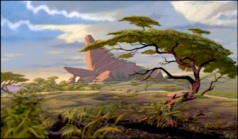
This story takes place on the flat plains of the African outback. The lush plains of the pride lands are ruled by the lion king at pride rock and all the land in the shadows is where the outcasts are banished. A large desert surrounds the vast plains and deep within it, there is a large oasis where Simba escapes to during a section of the story.
There aren’t any dates given in this story and there is no trace of any human life by which to judge the era, but the all of the animals in the story still exist today and so we know that takes place during modern times.
Plot Outline:
Write a paragraph summarizing the story (6-8 sentences).
A young lion prince is born in Africa and is told by his father, King Mufasa, that when Mufasa dies, Simba will take over the throne, cheating his Uncle Scar out of becoming King of the Pride Lands. Scar, fueled by rage, plots to kill Mufasa and Simba so he is able to take over the throne. He convinces the hyenas to join his cause and together they manage to push Mufasa to his death through a well planned trap of stampeding wildebeests. Simba survives the stampede but Scar tells him that his father’s death is his fault because Mufasa wouldn’t have died if Simba hadn’t gotten into trouble. Armed with this misinformation and too scared to face his lion pride, Simba flees the Pride Lands and decides to never return home. After traveling through the desert, he meets Timone the Meerkat, and Pummba the Warthog, and the trio becomes fast friends. Simba stays with them as he grows into adulthood; learning their way of life and accepting their moto, “Hanukah Matata”, which means, “no worries”. For the most part, Simba is content until his childhood friend, Nala, finds him and begs him to return to the Pride Lands, where Scars reign has destroyed everything. All of the animals will starve to death if the rightful king does not return. Simba, unsure of his true identity, is reluctant to face his past but eventually agrees to fight for his kingdom after learning that Mufasa’s death was not his fault. Simba battles Scar, ready to re-claim the throne and complete “The Circle of Life.”
This video below sumerizes the entire story with a bit more drama!
Conflict:
What type of conflict do you see in the story? Give specific examples. Distinguish between major and minor conflicts.
 The major conflict portrayed in “The Lion King” is man vs. himself or, in this case, animal vs. himself. Before the tragic loss of his father, Simba was a confident young prince who was completely sure of himself and his future, but when landed with the guilt of Mufasa’s death, he cannot face his family and abandons his role as future king, leaving behind part of his identity. With a scarred past, no parental guidance, or life purpose, Simba adopts the moto(no worries) until he is forced to come to terms with his responsibility as king in a time of need.
The major conflict portrayed in “The Lion King” is man vs. himself or, in this case, animal vs. himself. Before the tragic loss of his father, Simba was a confident young prince who was completely sure of himself and his future, but when landed with the guilt of Mufasa’s death, he cannot face his family and abandons his role as future king, leaving behind part of his identity. With a scarred past, no parental guidance, or life purpose, Simba adopts the moto(no worries) until he is forced to come to terms with his responsibility as king in a time of need.![Simba-fights-with-Scar[1]](https://leahstps.files.wordpress.com/2012/02/simba-fights-with-scar1.png?w=300&h=172)
Another, slightly smaller conflict would be man vs. man when Simba faces Scar in the last battle for the throne at Pride Rock as pictured to the right.
 An example of the minor conflict of man vs. environment can be found when Simba has to face the ferocious heat of the desert when he flees for his life and also on his return journey as pictured in the lower left.
An example of the minor conflict of man vs. environment can be found when Simba has to face the ferocious heat of the desert when he flees for his life and also on his return journey as pictured in the lower left.
Theme:
State the main theme or message of the story in universal terms that apply to everyone, regardless of age, race, or gender. Main theme is underlined.
What sticks out most about “The Lion King” from among the older Disney stories is that Simba’s problem of finding his true identity and life purpose is one that every person can relate to. Everybody wants to find their purpose in life and know that they are important and needed. The biblical truth that God already has a purpose for each of us, our identity is in Him, and other biblical events, all appear in “The Lion King”. The main theme is finding our identity (in Christ) and following our life’s purpose, also, facing our past and learning from previous mistakes. Interestingly, “The Lion King’s” events parallels many of the bibles stories of paradise (where Simba had no worries), the fall (Simba’s disobedience), desert wandering, the reign of Satan (Scar), the need for a savior (Simba as the only one worthy), and the cataclysmic destruction of the earth (the Pride Lands destroyed), followed by the return of the savior who restores peace and the beginning of his full reign as rightful king (the Pride Lands restored under Simba’s reign).
Though the animal’s beliefs in the so called “Circle of Life”, and their behaviors in certain scenes, seem to be like Karma in Hindu religion, all the characters in the cast and the events throughout the story more clearly resemble the bible. Young Simba/Nala walking with Mufasa was like Adam/Eve walking with God before the fall, Scar and his army of banished hyenas represents Satan and his army of fallen angels, the adult Simba plays a Christ-like role as savoir for the Pride Lands, and Mufasa represents God who lives inside of us and is in whom we find our identity. In the reflective pool scene (featured below in the video) Mufasa is said to dwell inside Simba just as the Holy Spirit is in us, and then he comes in the clouds and speaks from the heavens reminding him that Simba’s identity comes from the father… Fire is used symbolically as the cleansing of sins reign (Scar’s reign) and water as spiritual renewal (renewal and restoration of the Pride Lands). Also the “Circle of Life” could be interpreted as the first breath of life, earthly death, and then eternal life, thus making a circle of life.
This movie clip shows the story’s theme that I just finished explaining. The video is kinda long but it was the only one I could find that contained everything I wanted. So if you want to get to the point just skip to the 2:00 mark exactly but if you skip it, you will miss the funny scene with the baboon singing nonsense. Your choice! 🙂
Literary Devices:
List at least three different examples of literary devices used in the story.
“The Lion King” is a film laced with imagery, metaphors, symbolism.
Feedback:
What is your overall opinion of this story and why?
As a child, I took in “The Lion King”story as pure entertainment and, of course, never noticed all the ![crazy Rafiki[1]](https://leahstps.files.wordpress.com/2012/02/crazy-rafiki1.jpg?w=161&h=109) underlying meanings. What young child would want to worry about finding their true identity or even know what that means anyway? Taking this in as a kid, I was scared of Scar and cheered on Simba,
underlying meanings. What young child would want to worry about finding their true identity or even know what that means anyway? Taking this in as a kid, I was scared of Scar and cheered on Simba,  I laughed at Timon and Pumbaa and was pretty creeped out by the baboon, I was sad when Mufasa died and loved singing along to the musicals, but I took everything as it was; a story. And
I laughed at Timon and Pumbaa and was pretty creeped out by the baboon, I was sad when Mufasa died and loved singing along to the musicals, but I took everything as it was; a story. And  as a story I loved it… When learning about all the depth of meaning in this story, I’m still not 100% sure if this movie was intentionally symbolic to the Bible’s story or another religion. But as each viewer can create his/her own interpretation with any work of cinema, I will keep the biblical perspective of “The Lion King” to pass on!
as a story I loved it… When learning about all the depth of meaning in this story, I’m still not 100% sure if this movie was intentionally symbolic to the Bible’s story or another religion. But as each viewer can create his/her own interpretation with any work of cinema, I will keep the biblical perspective of “The Lion King” to pass on!

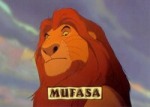
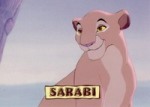
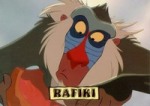

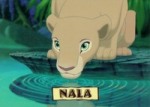





Wow! This is really thorough. It’s great that you took the time to really delve into this story. I love the description of Pumbaa, one of my favorite characters. Great pictures and other visuals to go along with it. Nice job!